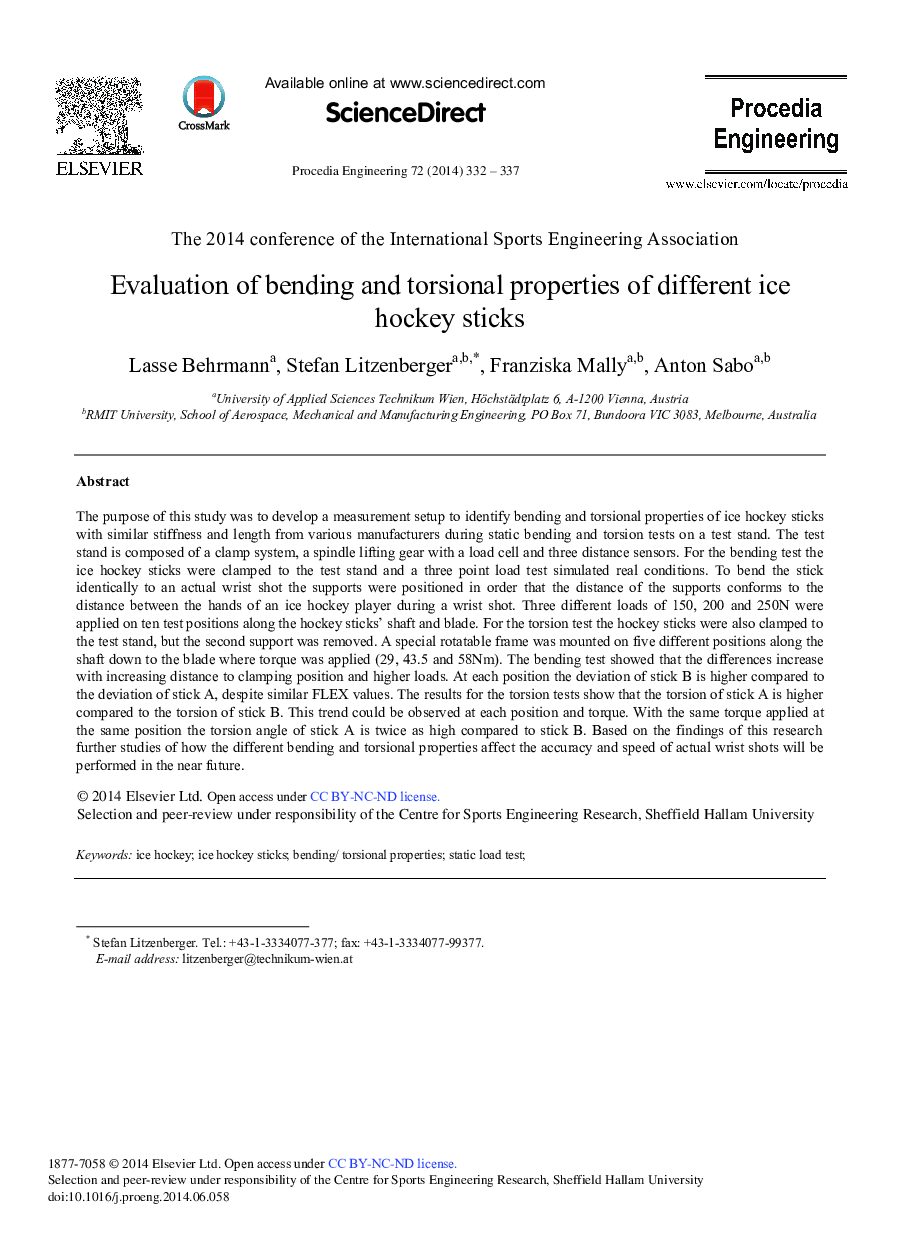| Article ID | Journal | Published Year | Pages | File Type |
|---|---|---|---|---|
| 858972 | Procedia Engineering | 2014 | 6 Pages |
The purpose of this study was to develop a measurement setup to identify bending and torsional properties of ice hockey sticks with similar stiffness and length from various manufacturers during static bending and torsion tests on a test stand. The test stand is composed of a clamp system, a spindle lifting gear with a load cell and three distance sensors. For the bending test the ice hockey sticks were clamped to the test stand and a three point load test simulated real conditions. To bend the stick identically to an actual wrist shot the supports were positioned in order that the distance of the supports conforms to the distance between the hands of an ice hockey player during a wrist shot. Three different loads of 150, 200 and 250N were applied on ten test positions along the hockey sticks’ shaft and blade. For the torsion test the hockey sticks were also clamped to the test stand, but the second support was removed. A special rotatable frame was mounted on five different positions along the shaft down to the blade where torque was applied (29, 43.5 and 58Nm). The bending test showed that the differences increase with increasing distance to clamping position and higher loads. At each position the deviation of stick B is higher compared to the deviation of stick A, despite similar FLEX values. The results for the torsion tests show that the torsion of stick A is higher compared to the torsion of stick B. This trend could be observed at each position and torque. With the same torque applied at the same position the torsion angle of stick A is twice as high compared to stick B. Based on the findings of this research further studies of how the different bending and torsional properties affect the accuracy and speed of actual wrist shots will be performed in the near future.
